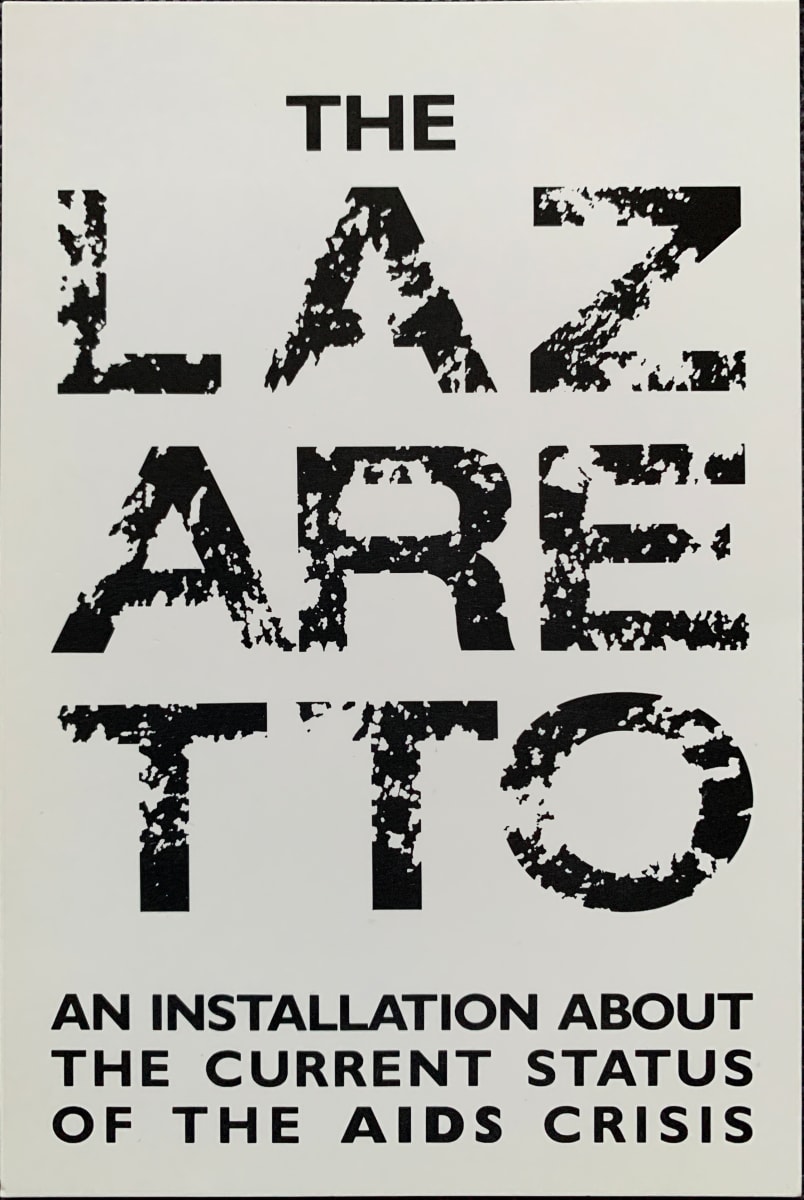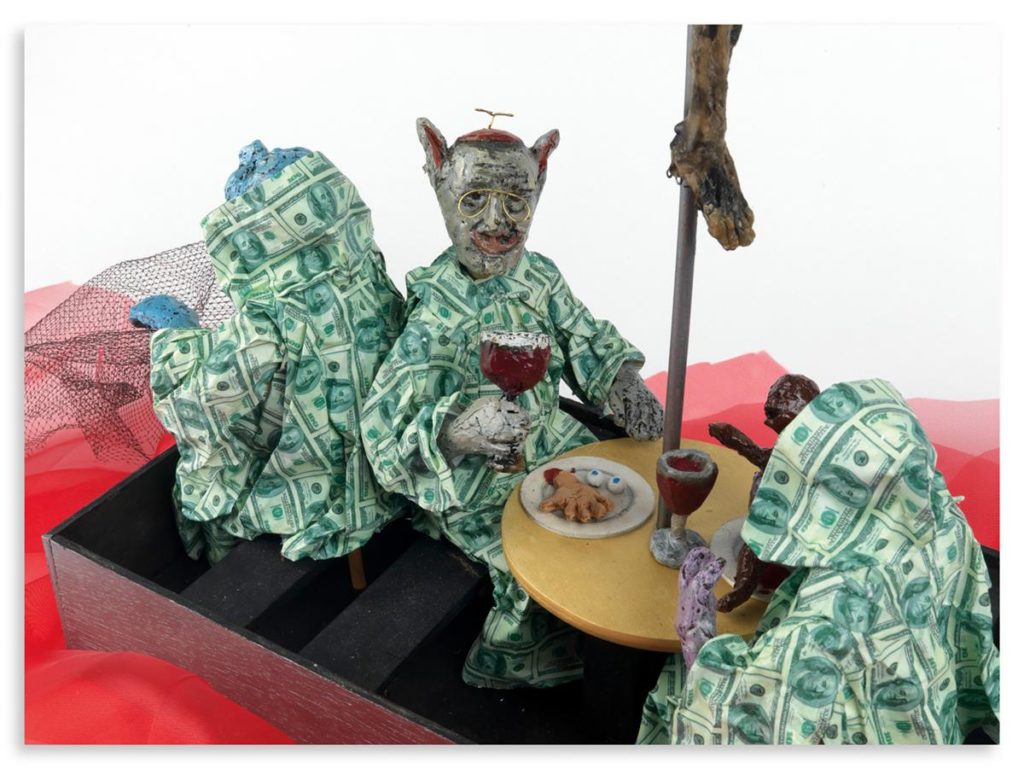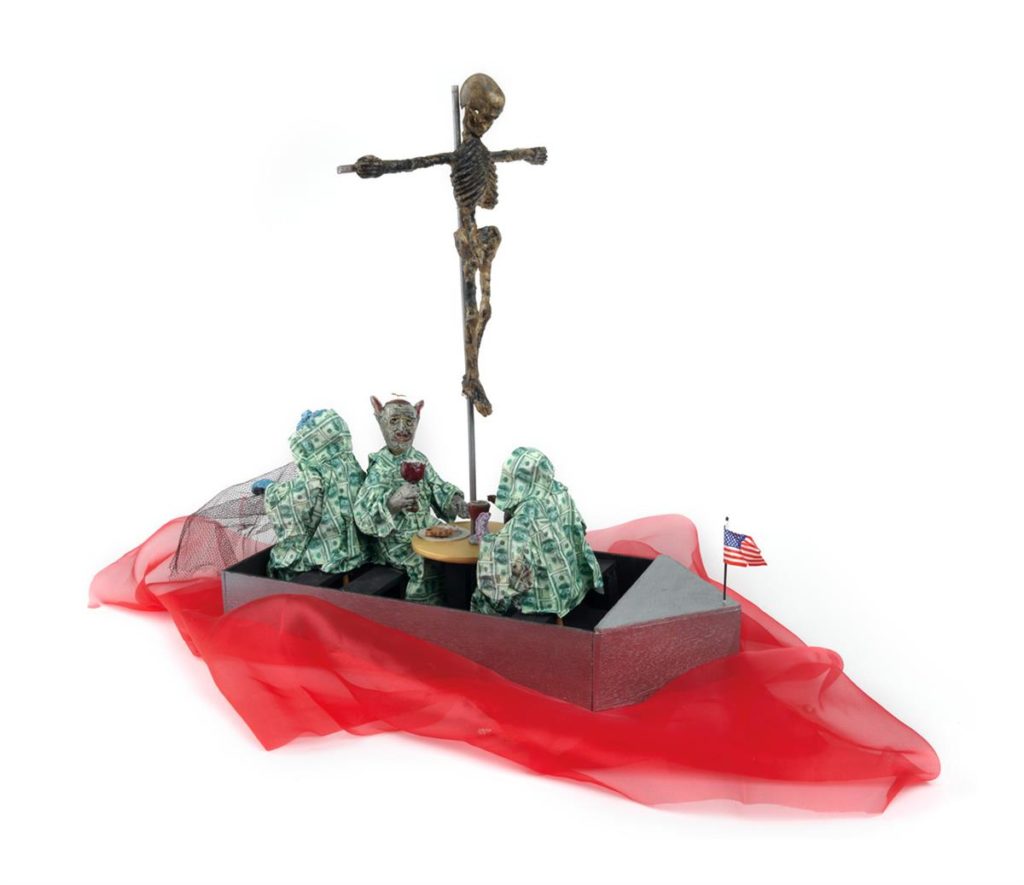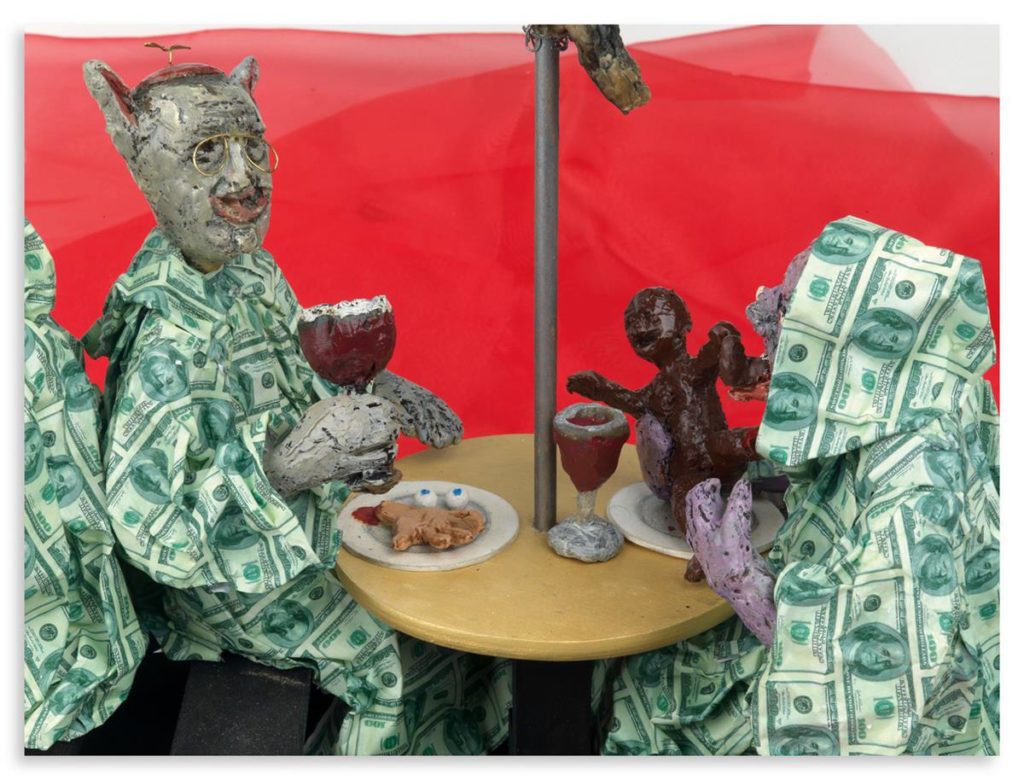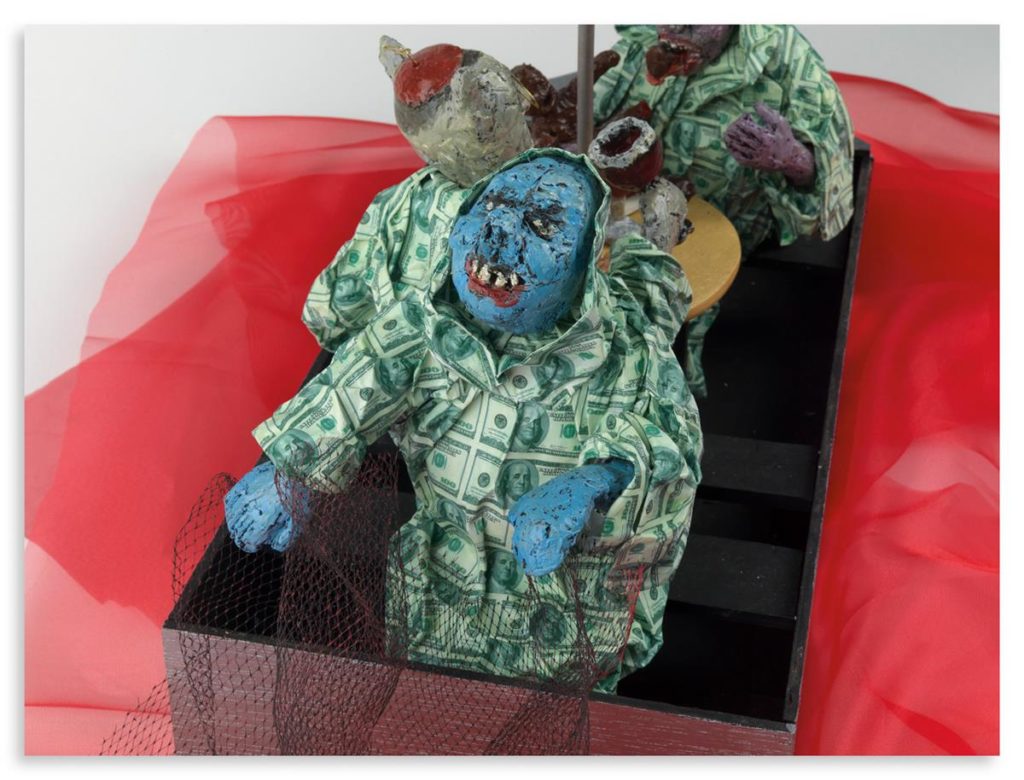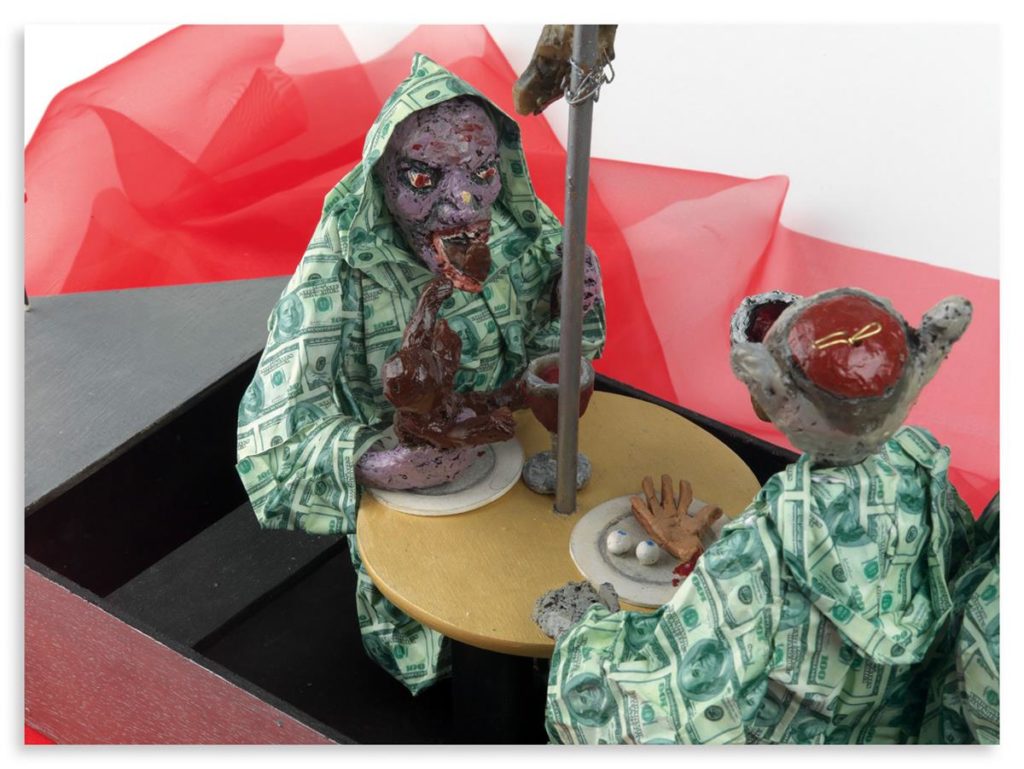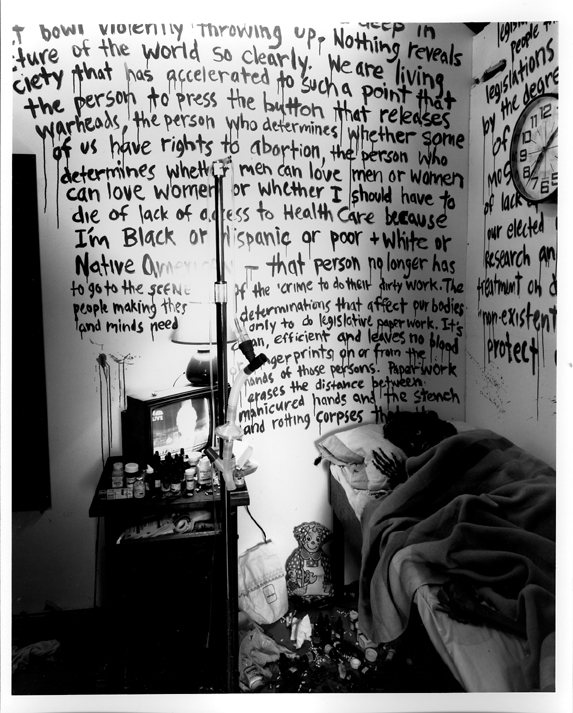
“The Lazaretto: An installation about the current status of the AIDS crisis.” Mixed media, 1990.
Part one is an analysis of the sufferers’ physical states which consisted of a vortex of trash bags lined with personal anecdotes from those suffering from AIDS with voice overs to support their stories. The first section concludes in a room that is found in squalor: viewers are presented with a mirror, a television playing numerous commercials, an abundance of pills on the table with the tv, a dead cockroach on top of the tv, rotten food, a dead rat in a mouse trap on the ground, another personal story on the wall written in bloody text, and a dead and decomposing skeleton covered in blood and vomit laying in the bed in the small apartment. Elizabeth Hess’ review in The Village Voice suggests “forcing viewers to take a look at the reality of one death, especially viewers who may not have seen the face of AIDS, is…necessary instruction.”
As viewers travel into part two of the installation, they witness a space with numerically tattooed arms reaching out to the spectator. Between the arms are clock faces without hands accompanied with graphs about the AIDS crisis. Moving through the second section, David’s favorite song, What a Wonderful World by Louis Armstrong plays. A paper maché quarantine boat, The Boat of the True Lepers, depicts three politicians, President George Bush, John Cardinal O’Connor, and Senator Jesse Helms, who David held responsible for much turmoil in his community. The true lepers partake in the act of cannibalism where they use a piece of intestines as a straw to drain the life from a black infant — a symbolic reference to the high numbers of infants of color affected by the AIDS crisis. Lashed to the mast of the ship is a christ-like IV drug user as the boat moves through a sea of dead and drowning souls.
Part three is a dark passageway in which viewers are presented with an illuminated box containing a dancing Howdy Doody ventriloquist’s puppet representing a self-centered, uncaring politician in the midst of a vortex of money repeating empty political rhetoric: “Hey don’t look at me I’m just a puppet! I’m a politician! I just got sawdust for brains.”
David felt it was his mission to inform the community about the complexities of the AIDS crisis. “Individually and collectively we worked through urgency, illness, terror, insanity, and poignancy,” explains Susan Pyzow. Part four of the installation is a table with mounds of literature about the AIDS crisis and AIDS care and prevention from several community groups, condoms, and needle-bleaching kits for the taking.
Proceeds from the sale of items in the installation benefited these organizations, among them ACT UP, ADAPT (IV Drug Users), AIDS Treatment Resources, AmFAR, Caribbean Women’s Health Association, Coalition on Housing, Community Research Initiative, Hale House, Hetrick-Martin Institute, Hispanic AIDS Forum, Minority Task Force on AIDS, PWA Housing/Housing Works, People with AIDS Coalition, SAGE Positive and the Women & AIDS Resource Network.
—Sydney Lipner, David Wojnarowicz Foundation Fellow, Spring 2024
